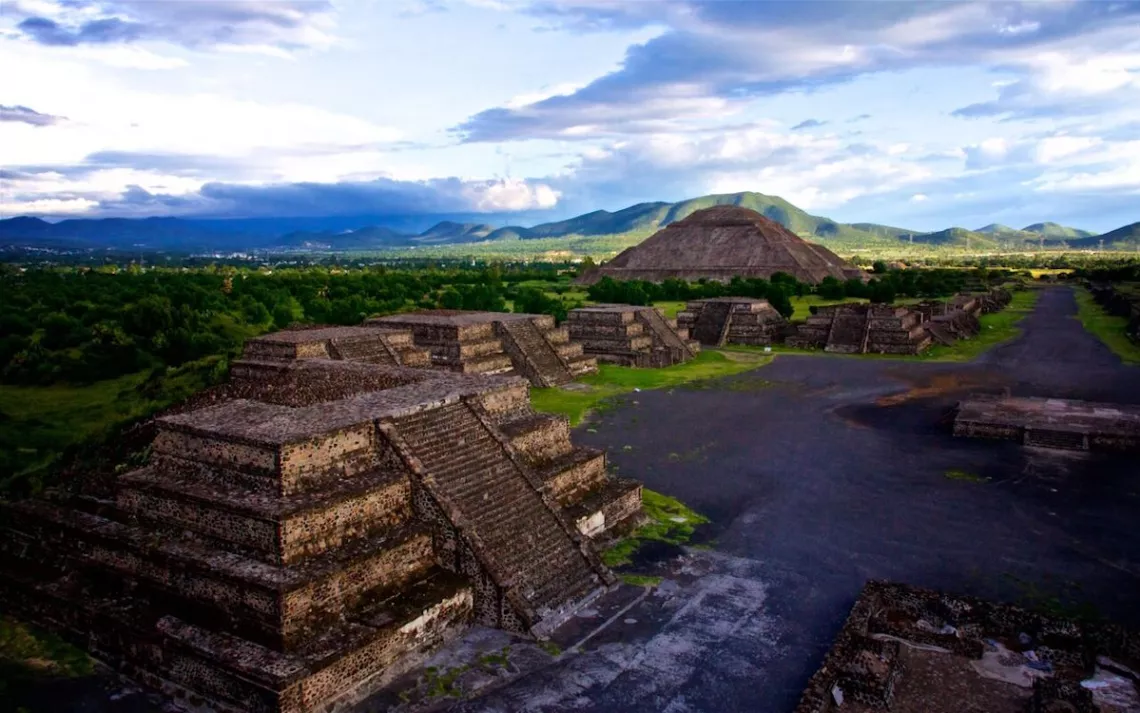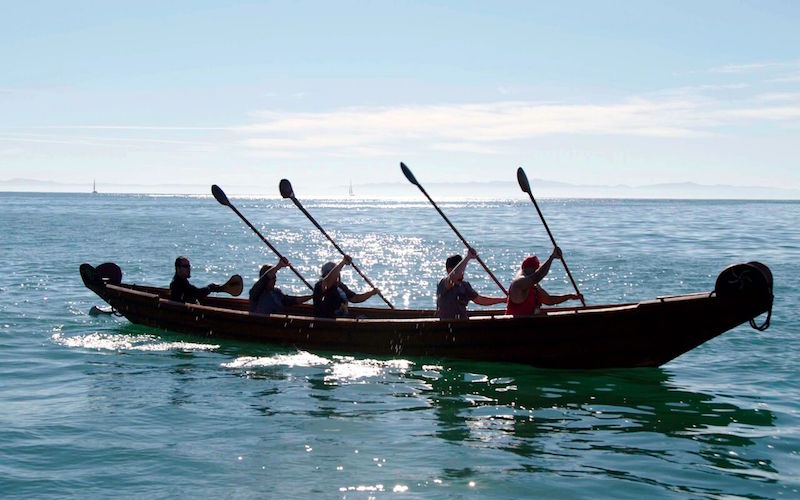Indigenous Knowledge Takes Center Stage in “Native America”
New PBS series explores the unique contributions of America’s Indigenous peoples

Teotihuacan from Pyramid of the Moon | Photos courtesy of Providence Pictures
While visiting the 1600-year-old tomb of a Mayan king in the Honduran jungle, documentary producer Gary Glassman became fascinated by the tomb’s incredible architecture and history. He decided to investigate the culture and sophistication of Native American societies further.
“What interested me was that there seemed to be a fundamental belief system shared across the Americas,” Glassman says. “I wanted to investigate what was going on in the Americas before contact with Europe, and look at this foundational belief system, identify it, explore its diversity of expressions in time and geography, and look at it through the lens of Native knowledge and Native scholarship.”
Native America, his resulting four-part series, premieres tomorrow on PBS at 9 P.M. EST. The program considers the ways in which Native peoples have explored and understood the world for millennia. Chiefly, the series explores how such beliefs are sparking collective action and community engagement.
Glassman and his production team, which includes Indigenous consultants, designers, and producers, spoke with members of communities across North America and thoroughly researched their history, rituals, and scholarship. Glassman turned his lens on various Indigenous nations, from the Northeast to the Pacific Northwest and down to Latin America. While communities' belief systems certainly vary, threads within the series demonstrate the ways in which they echo one another, reflecting deep patterns of collaboration. At a New Mexico site featured in Native America, for instance, artifacts are uncovered and then traced all the way to South American cultures—driving home the notion that these cultures have a long history of sharing ideas. Glassman was particularly interested in exploring Native history prior to colonization, which is precisely why Julianna Brannum, a member of the Comanche tribe (featured in the series), wanted to be involved as a producer.
“I felt that this was something that was going to be sort of epic,” Brannum says. “My instincts were right. [Glassman] was really thoughtful and respectful with the content, and very responsive to my thoughts and ideas.”
Glassman has been interested in telling traditionally ignored stories since the start of his career—his first documentary, Prisoners, portrays life in American prisons through the stories of 32 inmates inhabiting San Quentin Prison and the California Institution for Women. While the film includes plenty of statistics about the U.S. prison system, the main focus is on the prisoners themselves; namely, on their lives prior to their incarceration. In a similar vein, the Native America team closely features various Indigenous activists, including Angela Ferguson, a leader with upstate New York’s Onondaga Nation.

Ferguson runs community garden projects that embrace traditional Haudenosonee (often referred to as Iroquis) farming techniques, such as the “three sisters” method of growing squash, corn, and beans together. The second episode of Native America showcases Ferguson’s project, which involves Onandaga Nation members of all ages, from children to elders, and has had a positive impact on her community. “I wanted to get back to utilizing our traditional foods for community gatherings and meetings and things like that,” says Ferguson. “It triggers something in your ancestral memory and knowledge to eat these foods.”
Ferguson, like Brannum, sees Glassman’s approach as more nuanced compared with other portrayals of Indigenous nations. “Usually when Native people are represented, we are protesting or standing up for something, making Native people look angry,” she explains. “This documentary shows another side. While we are willing to stand up for our earth and fight for our rights however we can, we are also a thriving people, and we’re very successful, and very intelligent. We are committed to food sovereignty for our next generation.”
The series steers clear of the Eurocentrism that has characterized so many portrayals of Native Americans. Rather, Native America’s featured activists and community members explain their own cultures, and rather than analyses by non-Native academics, their voices are the focus of the series.
In fact, colonization is only touched upon in the final installment—which relays the ways in which various Native groups throughout the Americas have maintained their culture and resisted domination following Europeans’ arrival. “We really found that America’s first peoples created an extraordinary world separate from all other cultures in all other parts of the world. It is a unique contribution, so we really wanted to highlight [that],” Glassman says. “So many stories begin with contact, as if there was nothing here before Europeans came here. That is the furthest thing from the truth. Secondly, when people tend to tell that story—textbooks and the like—it is always about conquest. Instead of contact and conquest, we did contact and cultural continuity.”
Brannum points out that Native America’s inherent message is especially relevant in the age of climate change. “[Native people] have so much to contribute. Probably more than any other people on the earth,” she says. “We just need to be given a platform. People are looking to us. . . . We need to be having a real, significant seat at the table when we are talking about climate change.”
 The Magazine of The Sierra Club
The Magazine of The Sierra Club



